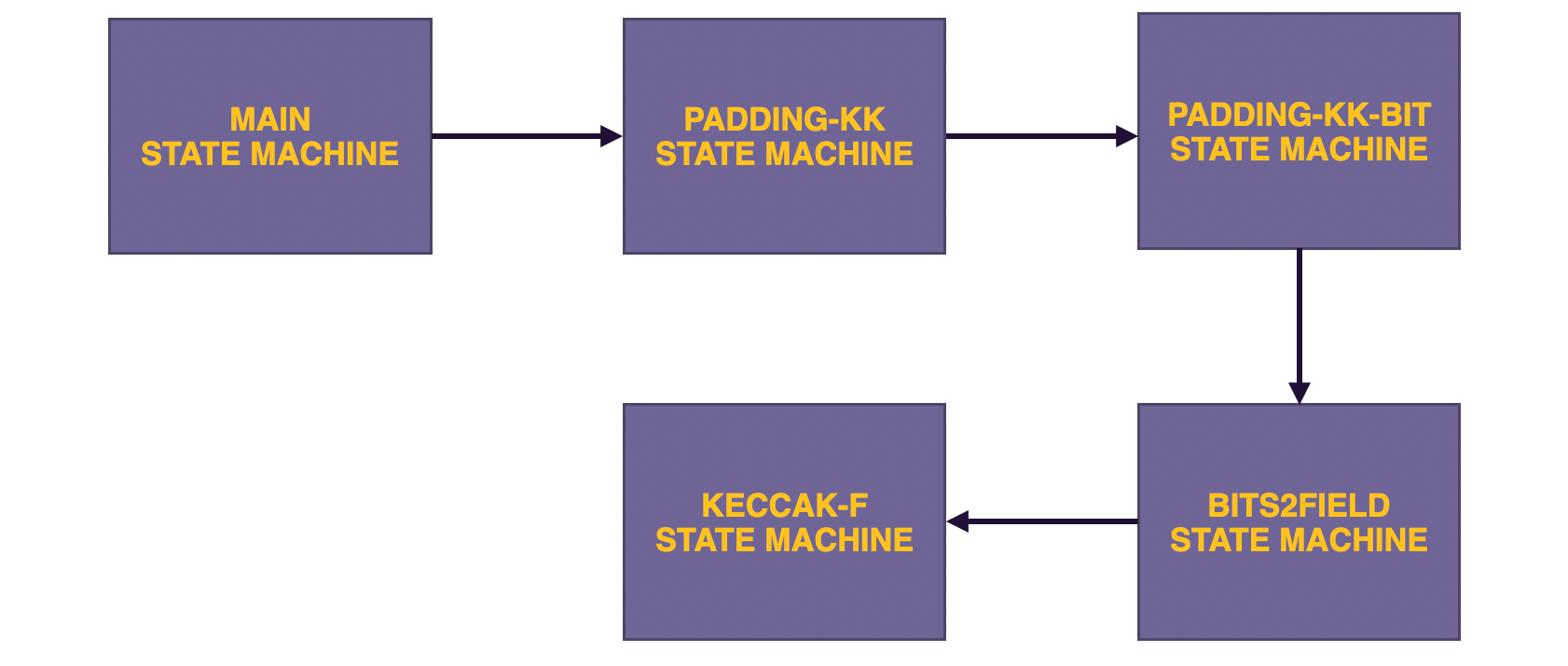Keccak framework
The zkEVM, as an L2 zk-Rollup for Ethereum, employs the Keccak hash function to achieve seamless compatibility with the Ethereum blockchain at Layer 1. However, rather than implementing a single state machine that performs four different tasks, the zkEVM does so in a framework of four state machines:
- The Padding-KK SM is used for padding purposes, as well as validation of hash-related computations pertaining to the Main SM’s queries. As depicted in the figure below, the Padding-KK SM is the Main SM’s gateway to the Keccak hashing framework.

-
The Padding-KK-Bit SM converts between two string formats, the bytes of the Padding-KK SM to the bits of the Keccak-F Hashing SM, and vice-versa.
-
The Bits2Field SM is used specifically for parallelizing Keccak-F SM implementation. It acts as a multiplexer between the Padding-KK-Bit SM and the Keccak-F SM. This state machine is called Bits2Field because it ensures correct packing of bits from \(44\) different blocks of the Padding-KK-Bit SM into a single field element. In other words, it is a \(44\)-bits-to-\(1\)-field-element multiplexer.
-
The Keccak-F SM computes string hashes at the request of the Main SM. Although the Keccak-F SM is a binary circuit, it operates on a 44-bits-by-44-bits basis rather than a bit-by-bit basis. This equates to running four \(44\) hashing circuits in parallel.